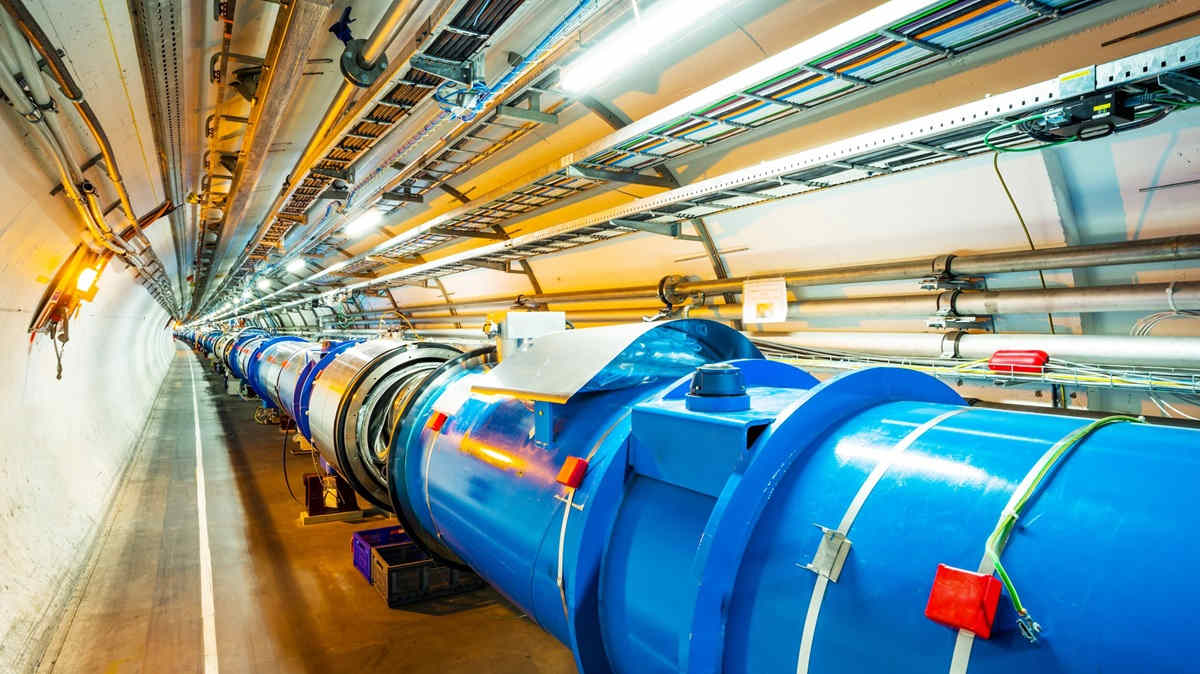CERN’s Large Hadron Collider (LHC) has provided the first direct measurement of electron- and muon-neutrino interaction rates.
The interactions have the highest neutrino energy ever detected from a human-generated source and could help answer fundamental questions about the universe including why there is more matter than antimatter.
The results are published in Physical Review Letters.
Neutrinos are fundamental particles common throughout the universe. In fact, about 100 trillion neutrinos pass through our bodies every second. They pass straight through because they interact so weakly with other matter. This makes their detection very difficult, giving them the nickname “ghost particles”.
Because they have very little mass (less than a billion billion billion billionth of a kilogram), they travel at almost the speed of light.
They come in 3 “flavours”: electron neutrino, muon neutrino and tau neutrino.
So far, neutrino cross sections – the probability that a neutrino will interact with a target particle – had not been measured except at low energies.
Researchers used the Forward Search Experiment (somehow given the acronym FASER) at the LHC on the Swiss-French border to achieve the first high-energy interactions of electron and muon neutrinos.
High-energy neutrinos are produced in the LHC’s proton-proton collisions using the FASERν detector.
The FASERν is an emulsion detector made up of 730 layers of alternating tungsten plates and emulsion films. The detector weighs a tonne.
“With FASERν, charged particle tracks produced by neutrino interactions in the detector can be reconstructed with sub-micron precision,” says co-author Dr Akitaka Ariga from Japan’s Chiba University. “This allows us to identify electron and muon charged-current (CC) neutrino interactions and the measurement of neutrino interaction cross-sections in the currently unexplored TeV (teraelectronvolt, or trillion electronvolt) energy range.”
Strict criteria meant the researchers were looking for electrons or muons with energies greater than 200 GeV (gigaelectronvolt, or billion electronvolt).
The neutrinos detected were in the TeV energy range for the first time and were in line with the expected behaviour as predicted by the Standard Model of particle physics.
“This marks the first ever physics result on neutrinos from a particle collider, a breakthrough in particle physics that could revolutionize the strategy of large-scale experimental research in the field,” Ariga adds.





















Discussion about this post